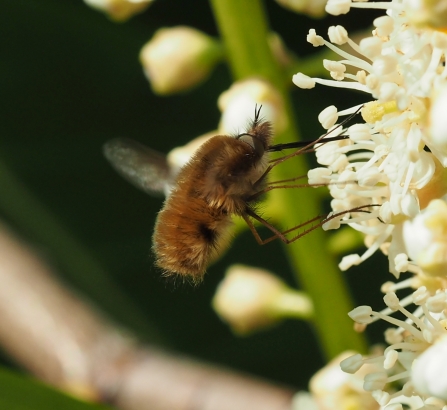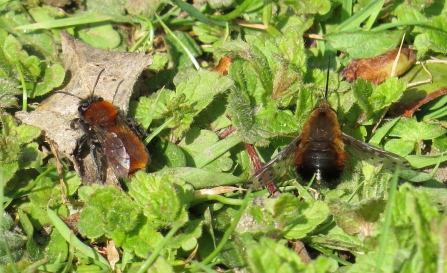I love this time of year as the flowers start to appear, they brighten my day and provide a much needed energy boost for a whole host of insects. About a week ago I was fed up with being stuck indoors and with the cold grey miserable weather outside. So as soon as the sun started shining I was out like a shot for a bit of exercise and to see what Mother Nature had in store to perk me up.
Hoping to spot some of the bees and bee-flies that were starting to emerge with the warmer weather I was disappointed when the sun soon disappeared and the temperature dropped. As I was about to head indoors, I noticed something on my sleeve. Initially, thinking it was a bit of plant debris, I was going to brush it off; luckily I didn’t as it was a dark-edged bee-fly, my first of the year!



